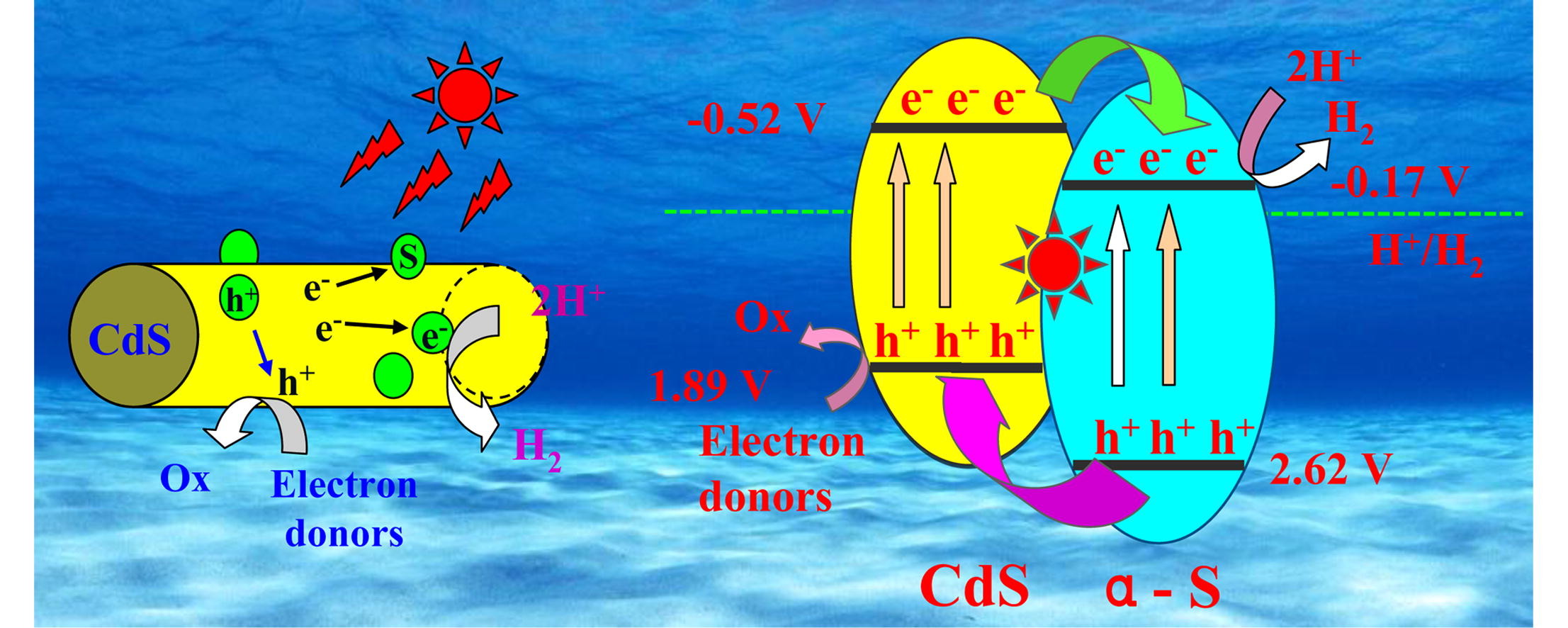Service hotline
+86 18518316054
 Current location : Home page > Resources > Papers > Construction of novel S/CdS type II heterojunction for photocatalytic H2 production under visible light: The intrinsic positive role of elementary a-S
Current location : Home page > Resources > Papers > Construction of novel S/CdS type II heterojunction for photocatalytic H2 production under visible light: The intrinsic positive role of elementary a-S
Crystalline α-S was firstly introduced to CdS system for H2 production.
Solvent evaporation-deposition-precipitation method was used to construct S/CdS.
S/CdS composites exhibited excellent H2 production activity and stability.
The intrinsic promoting effect of α-S in CdS system was discovered.
Traditional view points that the photocorrosion product sulfur clusters have negative effect on the activity of CdS system. Differently, in this paper, little amount of crystalline elementary α-sulfur (α-S) nanoparticles were loaded on the surface of CdS nanorods and resulted in enhanced photocatalytic H2 production activity under visible light (λ > 420 nm). The photocatalytic H2 production over 10% S/CdS composite was 8.14 mmol and further rose to 30.02 mmol in the presence of K2PtCl6 after 3 h irradiation. In the novel S/CdS system, largely improved separation efficiency of photoexcited charges were achieved through the heterojunction interface role between α-S nanoparticles and CdS nanorods. The matching type II energy band structure ensures that α-S could quickly trapped electrons from the host CdS nanorods for reducing H+ to produce H2. After 10 cycles experiment, S/CdS still kept excellent photocatalytic H2 production activity. This study clearly demonstrates the intrinsic promoting effect of α-S in CdS photocatalyst even in other metal sulfide systems for enhancing photocatalytic H2 production activity under visible light.
Crystalline α-S was firstly introduced to CdS system for H2 production via a facile solvent evaporation-deposition-precipitation method. The novel S/CdS composites exhibited excellent H2 production activity and stability under visible light due to the intrinsic promoting effect of α-S on photocarriers.

Experimental
Photoelectrochemical measurements
The transient photocurrent was investigated on an electrochemical analyzer equipped with standard three-electrode, a {t wire as a counter electrode and Ag/AgCl(3.0M KCI) as a reference electrode. A 300W Xe lamp (CEL-HXF 300, Beijing China Education Au-light Co., Ltd) with a 420 nm cutoff filter was used as used as light source.